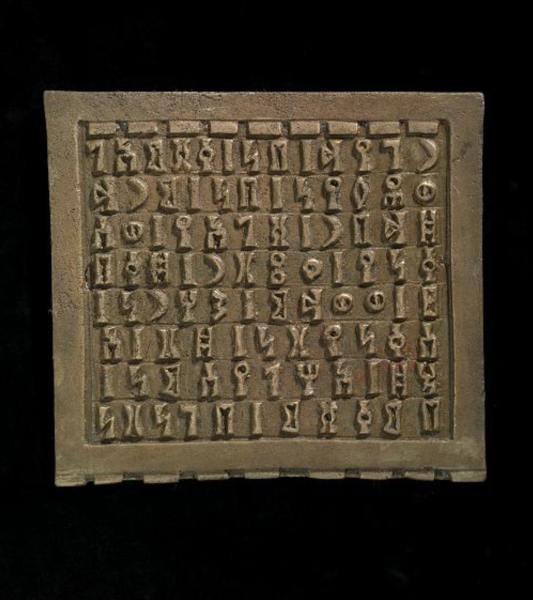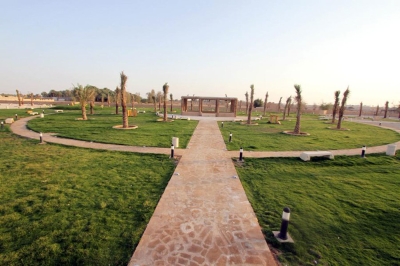
A Square Copper Plate, which is a copper plate in a square shape, was found among the discoveries of archaeological Qaryat al-Faw, located in the southeast of Wadi ad-Dawasir Governorate, in Riyadh Province, the Kingdom of Saudi Arabia. The plate dates back to between the third century BCE and the third century CE.
Uses and specifications of the copper plate
The square copper plate was used for funerary purposes. It measures 17.5 cm in length and 15.5 cm in width, featuring a broad raised frame. At the top of the plate, within the frame, are horizontally arranged consecutive rectangles, while at the bottom of the plate, outside the frame, are small, horizontally consecutive broken rectangles. The surface of the plate is divided into eight horizontal lines, forming a text inscribed in a finely executed raised Musnad script. The text reads as follows:
Raa, Jeem, Yaa, Daal Baa, Noon Qaaf, Seen, Meem, Alif, Laam
Waaw, Saad, Faa, Yaa, Noon Baa, Noon Meem, Raa, Daal
Dhaal, Daa, Baa, Raa Seen, Alif, Laam, Yaa Waaw, Seen
Qaaf, Noon, Yaa Ayn, Thaa, Taa, Raa Dhaal, Qaaf, Baa
Daad Waaw, Daal, Daal, Meem Sheen, Haa, Raa, Noon
Seen, Qaaf, Noon, Taa, Noon Dhaal, Taa, Alif
Khaa, Dhaal Alif, Haa, Laam, Yaa, Seen, Meem, Noon
Baa, Meem, Qaaf, Seen, Meem Baa, Jeem, Noon, Taa, Noon
Discovery and registration of the plate
The square copper plate was discovered during archaeological surveys and excavations carried out by the Antiquities and Museums Sector in Saudi Arabia over the past years, as part of the efforts of Saudi archaeologists, joint research teams, and scientific missions. The plate is displayed at the Museum of the Department of Archaeology at King Saud University in the capital, Riyadh, and has been part of a diverse collection of archaeological discoveries from Saudi Arabia exhibited in the Saudi Archeological Masterpieces Through the Ages Exhibition. The copper plate is registered under the number 262 F F 8.
Significance of the copper plate
The discovery of the square copper plate indicates the advanced level that writing craftsmanship had reached in the Arabian Peninsula. It also reflects the scribe’s skill in arranging the surface of this metal artifact into vertically consecutive lines with equal spacing. Additionally, the inscription demonstrates the importance of recording human affairs.
Related quizzes
Related articles

